
Kutch
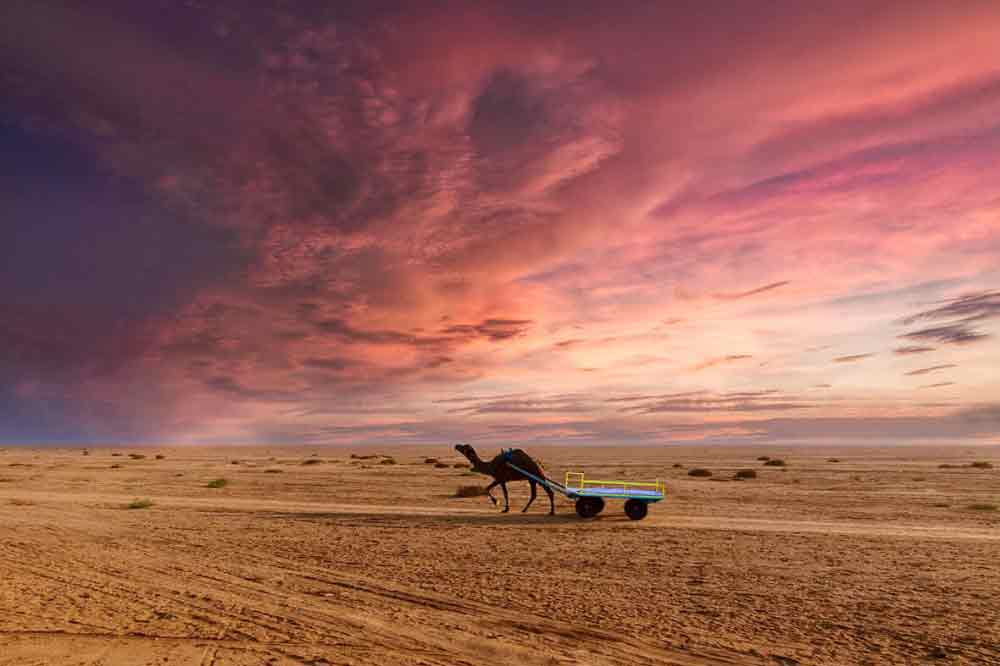
Kutch
Kutch district, officially spelled Kachchh, is a district of Gujarat state in western India, with its headquarters (capital) at Bhuj.
Kutch District is surrounded by the Gulf of Kutch and the Arabian Sea to the south and west, while the northern and eastern parts are surrounded by the Great and Little Rann (seasonal wetlands) of Kutch. It is also next to the Border with Pakistan. When there were not many dams built on its rivers, the Rann of Kutch remained wetlands for a large part of the year. Even today, the region remains wet for a significant part of year. The district had a population of 2,092,371 as of 2011 census, of which 30% were urban.[4] Motor vehicles registered in Kutch district have a registration number starting with GJ-12. The district is well connected by road, rail and air. There are four airports in the district: Naliya, Anjar, Mundra, and Bhuj. Bhuj and Anjar are well connected with Mumbai airport. Being a border district, Kutch has both an army and an air force base.
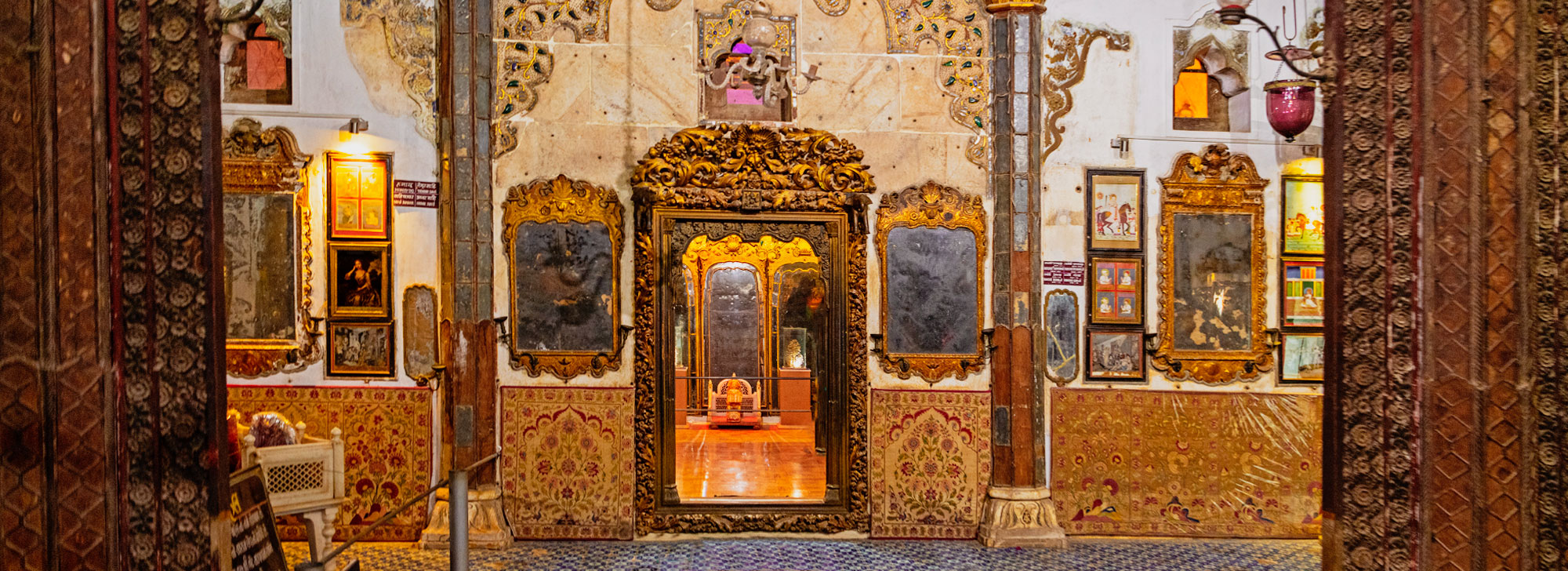
Aina Mahal
About the location: This Bhuj based beautiful palace, built in 1752, lost its top storey in an earthquake, but the lower floor is open for travellers, with a fantastic 15.2 m scroll showing a Kutch state procession. The palace is one of the three that lie in the walled complex of the old part of town. The 18th-century elaborately mirrored interior is a demonstration of the fascination with all things European – an inverted mirror of European Orientalism – with blue-and-white Delphi-style tiling, a candelabra with Venetian-glass shades, and the Harding lithograph series The Rake’s Progress. There are lofty views of Rani Mahal from atop the tower. The palace was built for Maharao Lakhpatji by Ram Singh Malam, a sailor from Dwarka who had learnt European arts and crafts on his travels. In the bedroom is a bed with solid gold legs (the king apparently auctioned his bed annually). In the Fuvara Mahal room, fountains played around the ruler while he sat watching dancers or composing poems.
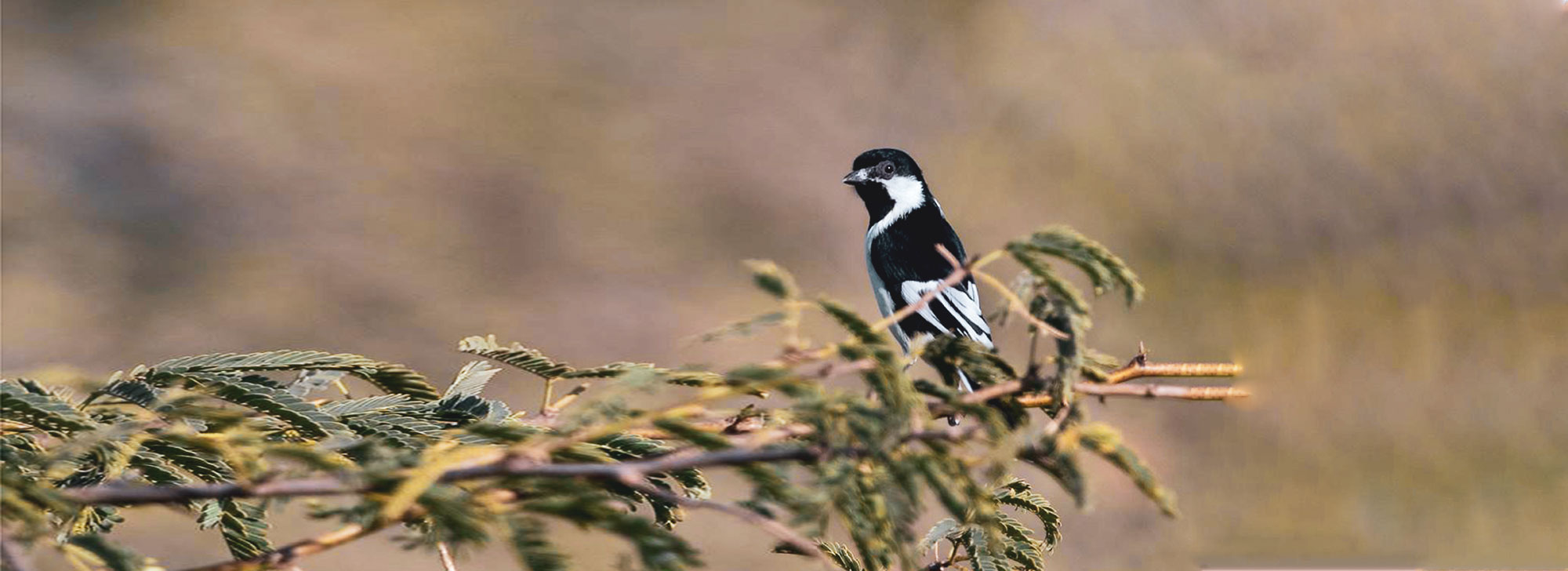
Chhari Dhand Wetland Reserve
About the location:
Located on the edge of the arid Banni grasslands and the marshy salt flats of the Rann of Kutch in Kutch district, the Chari-Dhand wetland conservation reserve is a protected forest in India. In the local Kutchi language, Chhari means "salty" and Dhand means "shallow wetlands". This seasonal desert wetland gets swampy during the monsoon season and is fed by north-flowing rivers and surrounding hills.
Bird watchers and ornithologists will find this place a paradise, as it attracts numerous species of migratory birds every year during the monsoon and winter seasons, making it a potential candidate for inclusion in the Ramsar Convention due to its rich biodiversity. The wetland is home to endangered species such as Dalmatian Pelican, Oriental Darter, Black-necked Stork, and Indian Skimmer, while thousands of flamingos, Common cranes, Painted storks, Raptors, and Spoonbills among others can also be spotted here. Additionally, the wetland also attracts chinkara, wolves, caracal, desert cats, and desert foxes, apart from endangered birds.
In conclusion, Chhari Dhand Wetland Reserve is a must-visit destination for bird lovers and wildlife enthusiasts. The wetland reserve offers a unique opportunity to experience the natural beauty and wildlife of Gujarat.
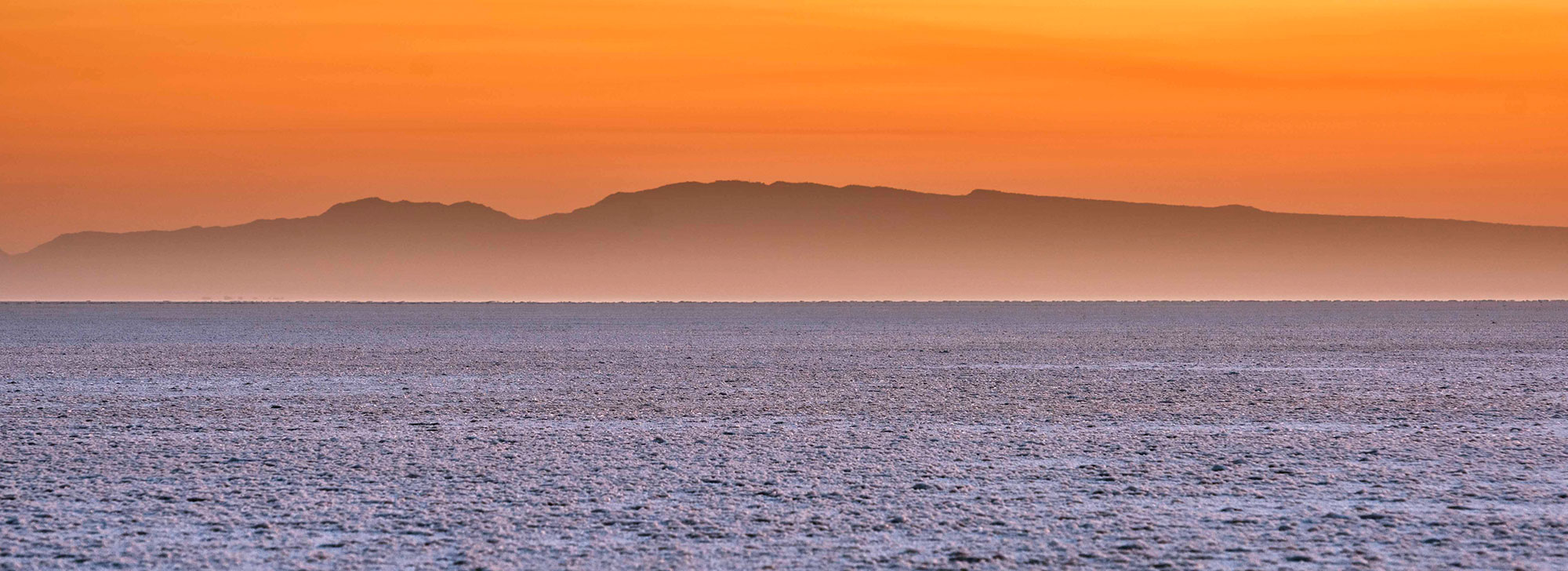
Kalo Dungar (The Black Hills)
About the location: North of the village of Khavda, Kalo Dungar (Black Hill) marks Kutch’s highest point (462 m), with remarkable views of the Great Rann salt flat (or inland sea if you’re visiting during the monsoon). You’ll need your own transport to visit. The hill is also famous for a 400-year old temple dedicated to Lord Dattatreya. You walk to the edge of the hill and look over at the sprawling blanched landscape that changes hues as the day progresses and the sun sinks behind the mountains. A 15-min drive from the base of the hill lands you on the India bridge that connects the far north of Kutch to the mainland. The area comes under the jurisdiction of the army and photography is not allowed. The Indo-Pak border lies about 40 km north from here.
Brief History: Legends say that Lord Dattatreya stopped to rest here and found a group of starving jackals. He offered them his body to eat and as they ate, his body continually regenerated itself. For the last four centuries, the priests at the temple prepare cooked rice for jackals who come in the late evenings for a meal.
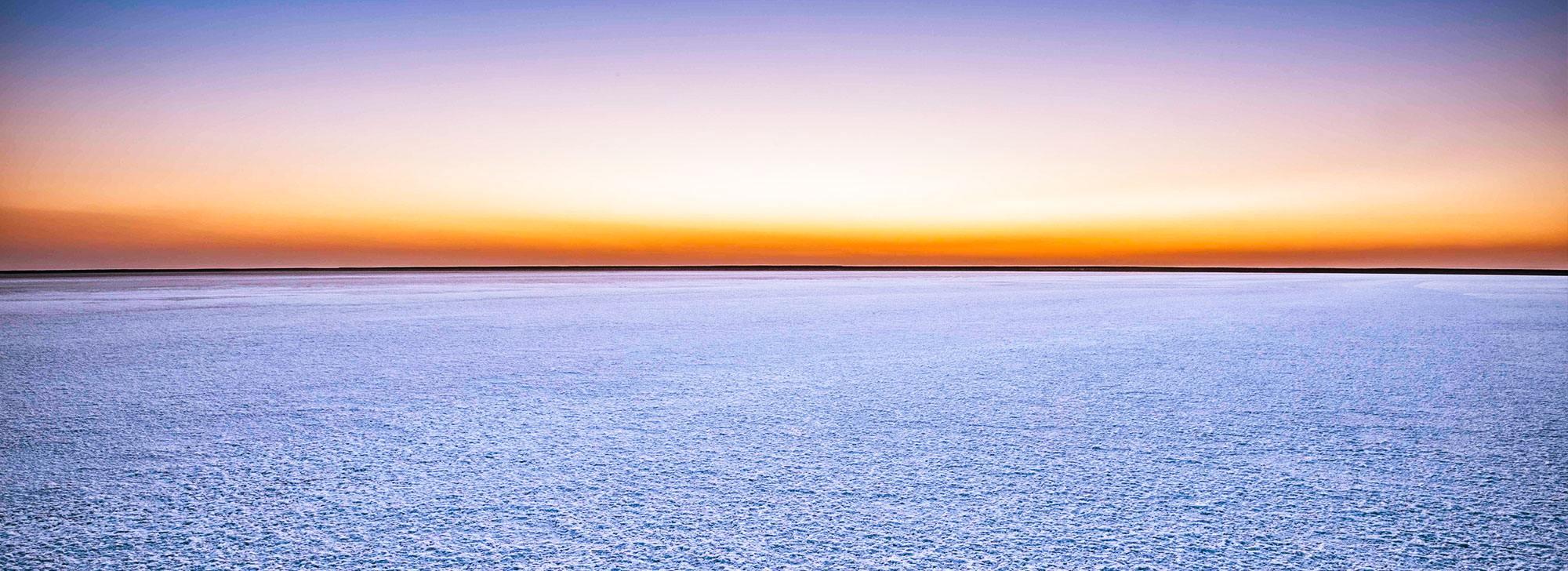
Great Rann Of Kutch
About the location: Rann of Kutch is a massive expanse of cracked earth, inland from the sea, that promises to take your breath away. The nothingness for miles is both nerve wracking and stunning with small oasis of water bodies and shrub forests doubling up as homes for pink flamingoes and wild asses. Tribal hamlets with cylindrical mud bhungas (huts) are the epicenter for Kutchi embroidery, tie and dye, leatherwork, pottery, bell metal craft and the famous Rogan painting by the only surviving expert family. Approximately 200 km east of the Rann, is the Little Rann of Kutch, which houses the 4953-sq-km Wild Ass Sanctuary. It homes the only remaining population of the chestnut-coloured Indian wild ass (khur), as well as blue-bulls, blackbuck and chinkara.
Brief History: The area was a once a sprawling shallow of the Arabian Sea until a constant geological shift closed off the connection with the sea. Over the years, the region eventually became a seasonal marshy salt desert. During monsoons, the marsh fills up with water and the wetland extends from the Gulf of Kutch on the west through to the Gulf of Cambay on the east. In the summers, the water dries to create a crunchy based bed of white salty land.
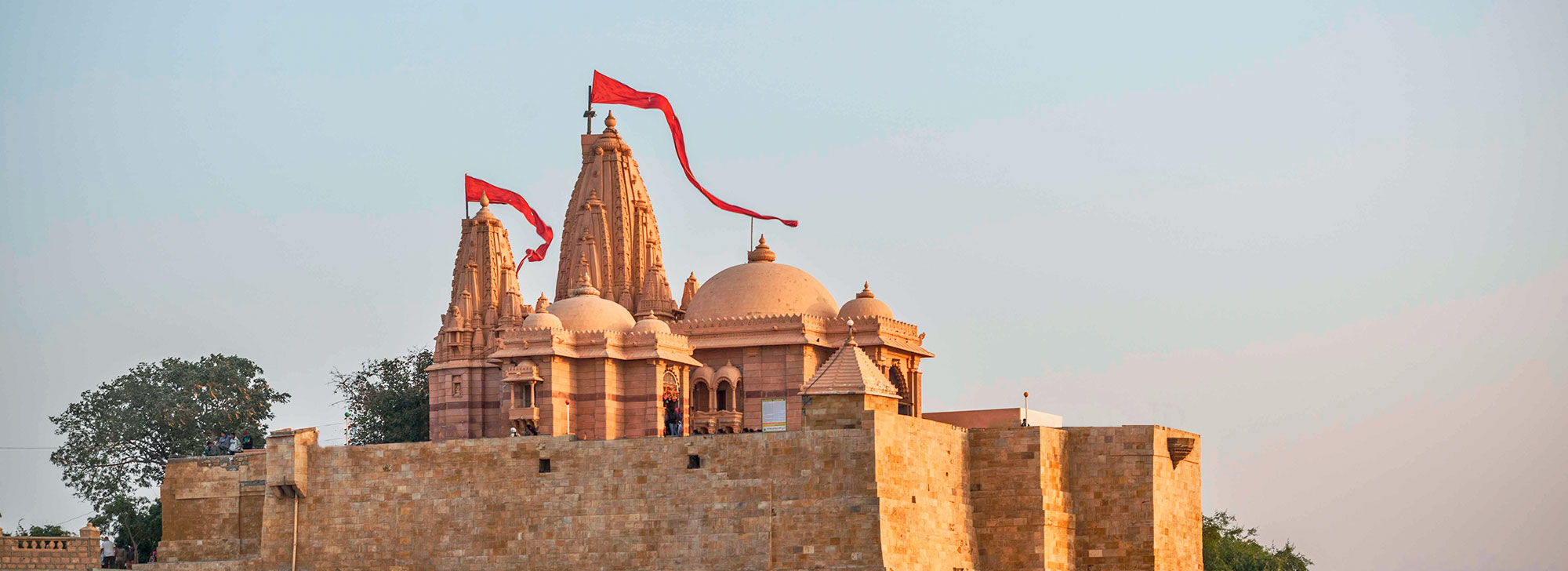
Koteshwar Mahadev Temple
About the Location: After traveling over the expanse of desert in western Kutch, you find the Koteshwar Temple, at a place where the immensity of dry land meets the incomprehensible vastness of the sea. After so much arid ground, the sight of the ocean will awaken your spirits; though the sea is even less hospitable to humans, a sobering thought. The only point that breaks the skyline from the flat brown horizon to the east and the wide blue horizon to the west is the point of the Koteshwar Temple, the last outpost of human construction at the westernmost limit of India. Not overrun by tourists like the temple at Dwarka, Koteshwar is conducive to contemplating emptiness, pondering the place of humanity on earth (and ultimately, isn’t that what spiritual traditions are about?).
The story of Koteshwar begins with Ravana, who won a boon from Lord Shiva for an outstanding display of piety. This boon was the gift of a Shiva linga of great spiritual power, but which Ravana, in his arrogant haste, accidentally dropped and it fell to earth at Koteshwar. To punish Ravana for his carelessness, the linga turned into a thousand identical copies (some versions of the story say ten thousand, some a million; suffice to say it was quite a lot.) Unable to distinguish the original, Ravana grabbed one and departed, leaving the original one here, around which Koteshwar Temple was built.
Visitors can see the temple, walk along the beach and on a clear night, even see the glow of light from Karachi, Pakistan, on the northwestern horizon.



Post ReviewPraising pain was born give you a complete.